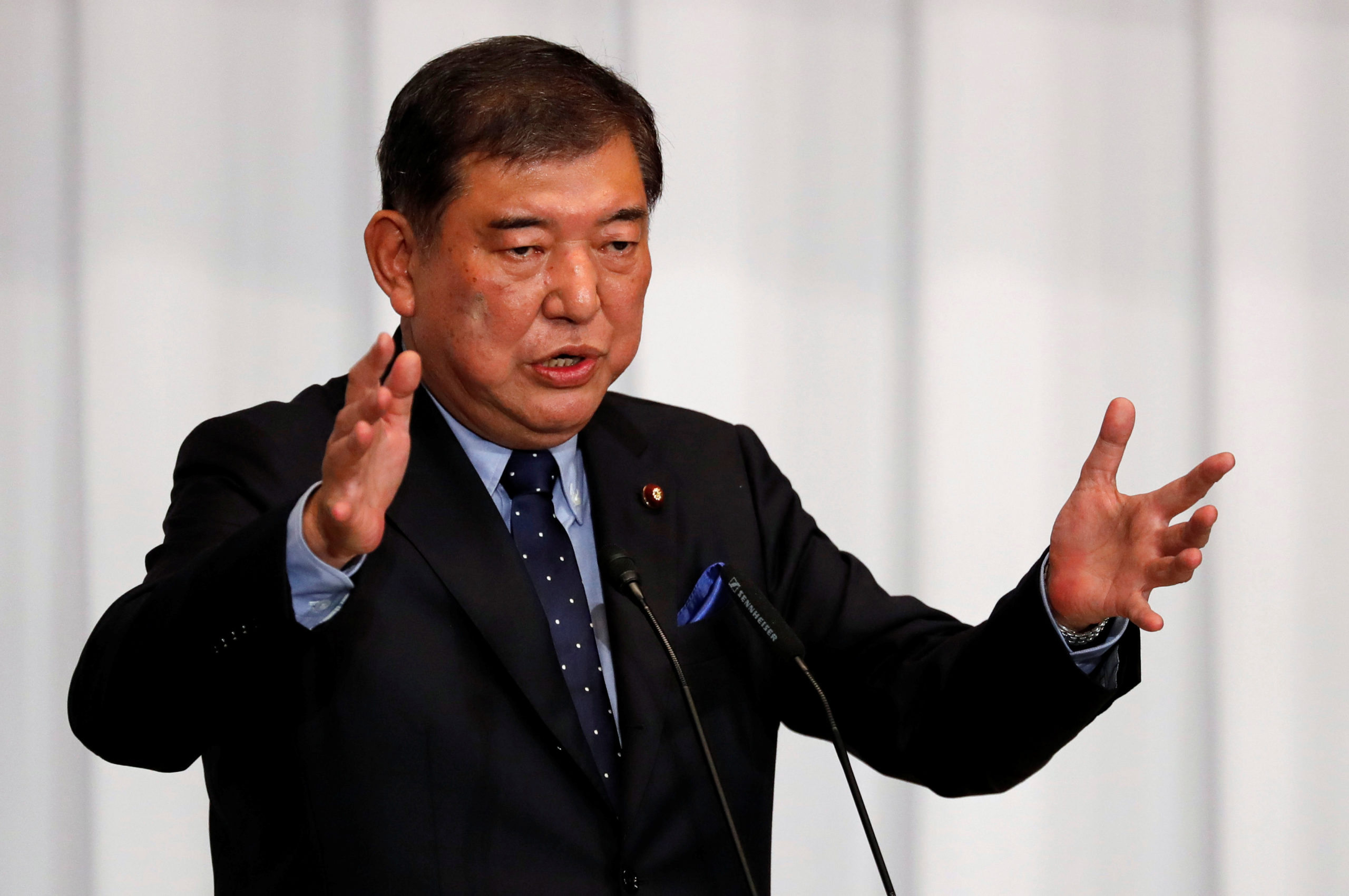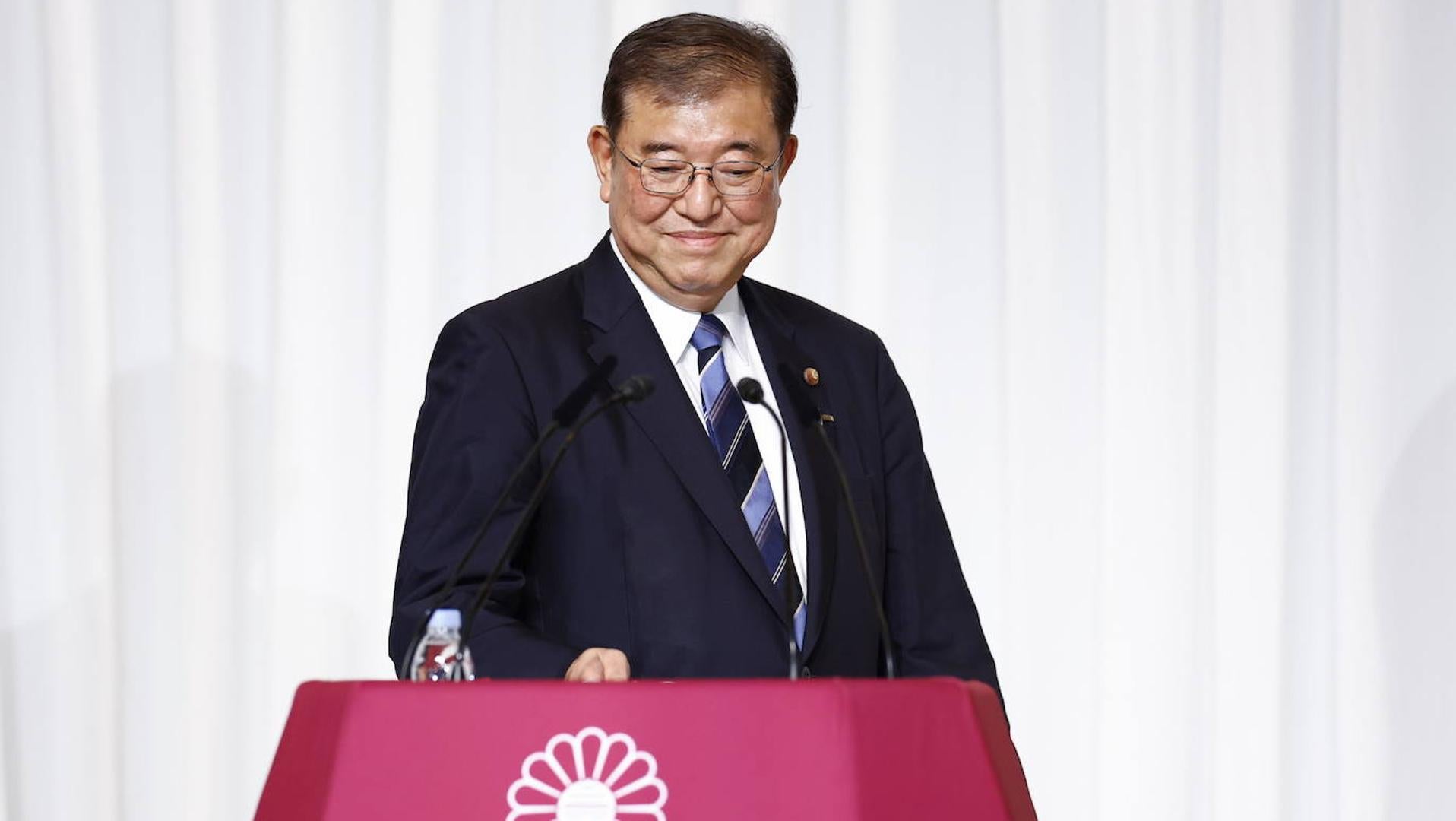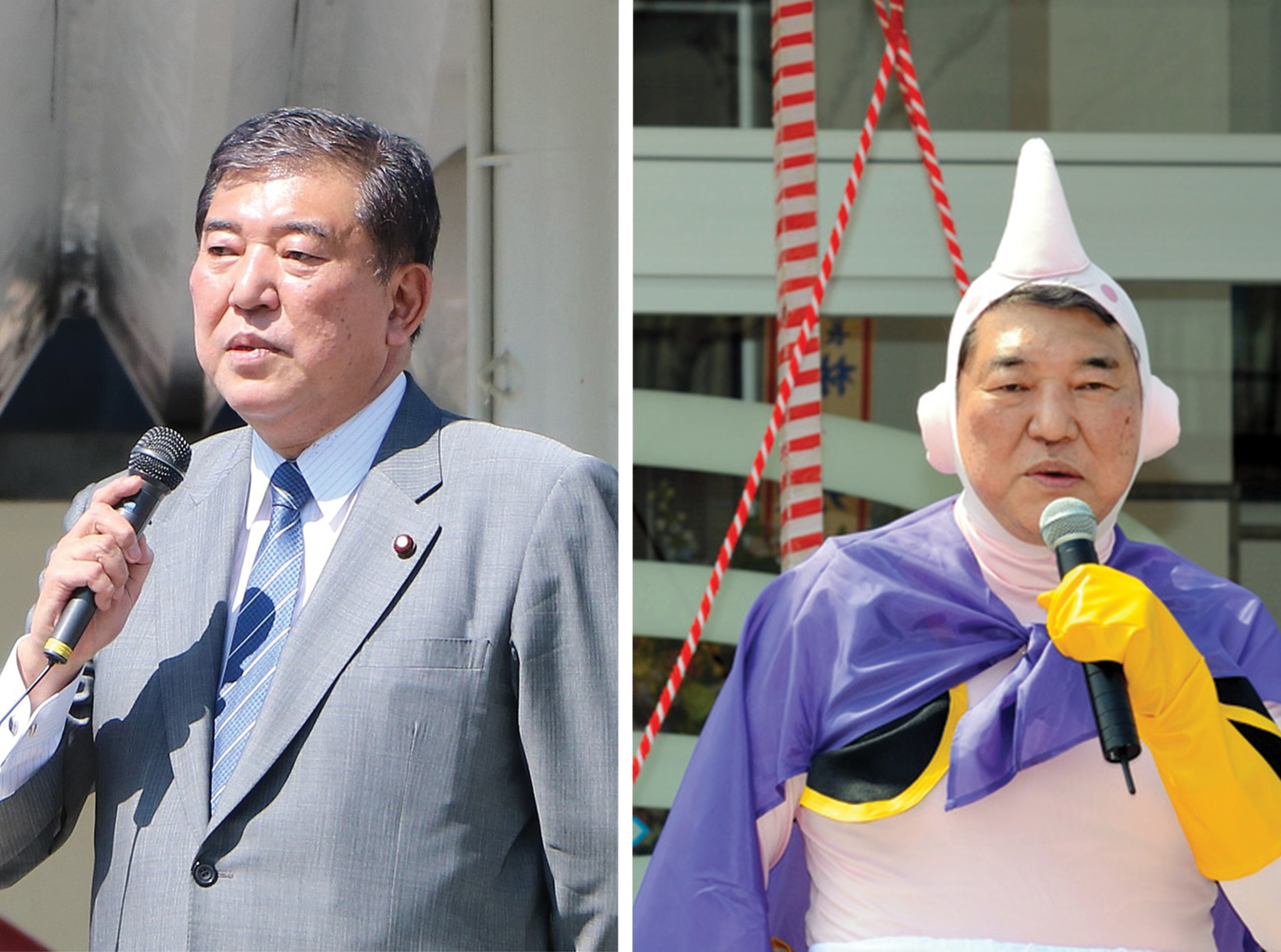Prime Minister Japanese - A Look At The Nation's Leader
The person holding the title of prime minister in Japan is, quite simply, the country's main leader, the one who guides the government. This role also means they are the head of the group of ministers who make up the cabinet, sort of like the captain of a very important team. It's a position that carries a lot of weight, you know, setting the direction for the whole nation and dealing with its day-to-day workings.
So, if you've ever wondered who really calls the shots in Japan, it's this individual, the prime minister Japanese. Their office has a long and rather interesting past, going back to the late 1800s. There's been a whole line of people who have held this top spot, each leaving their own mark on the country's story. It's not just a recent thing, but a role with deep roots in how Japan has shaped itself over the years, more or less.
Right now, there's a new face in this significant role, and people are certainly paying attention. This article is going to take a closer look at who the prime minister Japanese is, what they do, and a bit about how this powerful position came to be. We'll also touch on some of the big things the current prime minister is working on, because, well, that's what leaders do, isn't it?
Table of Contents
- Getting to Know the Prime Minister Japanese
- What Does a Prime Minister Japanese Actually Do?
- How Did the Prime Minister Japanese Role Begin?
- Who Gets to Be Prime Minister Japanese?
Getting to Know the Prime Minister Japanese
When we talk about the leader of Japan, we're really talking about the prime minister Japanese. This person is at the very top of the country's government structure, guiding everything from big national plans to how the different government offices work together. They are the ones who speak for the nation on the world stage, and they also make sure the day-to-day business of running the country gets done. It's a role that demands a lot of attention and, you know, a steady hand, too.
The office itself has been around for quite some time, with its modern form starting way back in 1885. That's when Itō Hirobumi stepped into the role as the very first prime minister Japanese in the way we think of it today. So, it's not a new thing, but rather a long-standing part of how Japan has managed its affairs for well over a century. There's been a whole parade of people who have held this position, each one adding to the story of the country's leadership, basically.
And speaking of the story, there were, for instance, 32 prime ministers who served under the old Meiji Constitution. During that time, they got their authority, their sort of blessing, directly from the emperor. It was a different kind of setup back then, where the emperor's word carried a great deal of weight in selecting who would lead the government. This historical background gives us a bit of a feel for how the role has changed and, in some respects, stayed the same over the years.
Who is Shigeru Ishiba, the New Prime Minister Japanese?
So, who is the person currently holding this very important position? As of recently, it's Shigeru Ishiba. He took on the role of prime minister Japanese after a good deal of discussion and decision-making within the main governing group, the Liberal Democratic Party. This happened on a Tuesday afternoon, a day that certainly marked a big change for the country's leadership. It's quite a moment when a new person steps into such a central role, isn't it?
The parliament in Tokyo, which is Japan's main law-making body, formally put him in charge. They held a vote, and he was chosen as the new prime minister Japanese. This really confirms his position as the leader of the governing party, and by extension, the country. It's a process that shows how the country's political system works, where the people's representatives make these big choices. He was, in fact, the party's choice, which is how things often work in parliamentary systems, you know.
There was a picture, for example, that showed the Emperor Naruhito with Shigeru Ishiba during a special event at the Imperial Palace in Tokyo. This was when new ministers were being officially sworn in. Ishiba was there, watching as Junko Mihara, who is now in charge of things related to children's policies, took her place. This kind of ceremony, you know, really highlights the tradition and the formal side of government changes in Japan, and it's a way of showing the continuity of the state.
Shigeru Ishiba - A Snapshot of the Prime Minister Japanese
Shigeru Ishiba has quite a background before becoming the prime minister Japanese. He used to be the defense minister, a role that involves looking after the country's security matters. He won a leadership competition within his party, which was quite a busy race, it seems. It even went to a second round of voting, showing that there were many people who wanted the top spot, and he had to work hard to get it, so to speak.
He's also held other significant jobs in the past. For a time, he was the minister responsible for dealing with the country's shrinking population and working to make local economies stronger. This was part of a specific plan for national special zones, and he held that position until August 2016. Before that, in December 2014, he was chosen to be part of the House of Representatives, which is one of the two parts of Japan's parliament, you know, after a general election. He's been around the block, politically speaking, for a while.
Another role he had was as the minister for internal affairs and communications. This is a job that looks after things like the postal service, broadcasting, and local government. So, he has a lot of experience with how the country's systems run, which is pretty useful for someone taking on the prime minister Japanese role. All these past positions give him a deep sense of how the government works and what the people need, which is, well, something to consider.
It was mentioned that he gave a speech before the final round of voting in his party's leadership race. This was to decide who would take over from the previous leader. It shows that he was very much involved in the process, putting his ideas forward and trying to get support from his fellow party members. This kind of public speaking is a big part of getting to the top, and it really shows a person's ability to connect with others, too, in a way.
| Current Role | Prime Minister of Japan |
| Previous Role (Immediate) | Former Defense Minister |
| Party Affiliation | Liberal Democratic Party (LDP) |
| Path to Prime Minister | Won party leadership contest, followed by parliamentary election |
| Past Cabinet Positions | Minister in charge of policies related to children (attestation ceremony), Minister in charge of overcoming population decline and vitalizing local economy (until Aug 2016), Minister of State for the National Strategic Special Zones (until Aug 2016), Minister for Internal Affairs and Communications |
| Parliamentary Election | Elected to House of Representatives (47th general election) Dec 2014 |
| Key Challenges Mentioned | Addressing public outrage over party corruption scandals |
| Foreign Policy Focus (cited) | Reestablishing bonds with former US President Trump's administration |
What Does a Prime Minister Japanese Actually Do?
The prime minister Japanese has a lot on their plate, honestly. They are, as we've talked about, the head of the government, which means they are responsible for making sure the country's policies are put into action. This involves overseeing all the different government departments and making sure they are working towards the same goals. It's a bit like being the chief executive officer of a very large company, but for an entire nation, you know.
One of the first things a new prime minister does, after being formally chosen, is to put together their own group of ministers, what's called a cabinet. This cabinet is made up of people who will lead specific areas, like finance, foreign affairs, or education. The prime minister picks these people, and they all work together to run the country. So, it's not just one person making all the decisions, but rather a team led by the prime minister Japanese, and that's pretty important, really.
We saw an example of the kind of work a prime minister does when there was a mention of a video message from Shigeru Ishiba for something called "Japan Innovation Night" and a visit to Canada. This shows that the prime minister Japanese also plays a big role in representing the country on the international stage, meeting with leaders from other nations, and promoting Japan's interests around the world. It's a job that goes beyond just domestic matters, extending to global connections, too, it's almost.
Another big part of the job, especially for a new prime minister Japanese, is dealing with the challenges the country faces. For instance, Shigeru Ishiba is stepping into his role at a time when there's been some public unhappiness about certain issues, like corruption concerns within his party. So, a key part of his work will be to address these feelings and try to bring back trust. It's a really big part of being a leader, responding to what the people are thinking and feeling, you know.
The prime minister also has a say in how Japan interacts with other countries. There was a comment from someone who used to be an ambassador to Japan, Bill Hagerty, a senator from Tennessee. He suggested that Prime Minister Ishiba sees this as a chance to strengthen the ties between Japan and the United States, especially with the previous US administration. This shows that foreign relations are a constant and significant part of the prime minister Japanese's daily responsibilities, and it's something they think about a lot, basically.
How Did the Prime Minister Japanese Role Begin?
The office of the prime minister Japanese didn't just appear overnight. It actually came into being during a very significant time in Japan's past, in the 1880s. This period is known as the Meiji Restoration, a time when Japan was going through massive changes, moving from a more traditional, isolated way of life to becoming a modern nation with a strong central government. It was a time of big shifts, and the creation of this role was a central part of that transformation, you know.
Before 1947, the way the prime minister Japanese was chosen was quite different. Originally, the emperor would pick the person for the job, often with advice from his close helpers. So, it was more of a direct selection by the imperial family. This reflected the system of government at the time, where the emperor held a lot of formal power. It was a system that had been in place for a long time, and it shaped how leadership was viewed, in a way.
The Early Days of the Prime Minister Japanese Office
Back when the office was first set up, during the Meiji Restoration, Japan was really trying to catch up with other powerful nations around the world. They looked at how governments in places like Europe were structured and decided they needed a similar kind of central leader. This is where the idea of a prime minister Japanese, as the head of the government, really took hold. It was a move to modernize the country's political setup, and it was a pretty big deal at the time, you know.
The establishment of the cabinet, which is the group of ministers working with the prime minister, also happened around this time. It meant that government decisions would be made by a collective group, rather than just one person. This helped to spread out the responsibilities and make the government more organized. It's a system that has, more or less, continued to evolve, but its beginnings were in this very period of great change for Japan, so.
Who Gets to Be Prime Minister Japanese?
So, how does someone actually become the prime minister Japanese today? It's not as simple as just being picked by one person anymore. Since the country adopted its current constitution in 1947, the process changed quite a bit. Now, the prime minister is chosen by the Diet, which is Japan's parliament, also known as the Kokkai. This means that the people's representatives, who are elected to the Diet, are the ones who make the choice. It's a very important part of the country's democratic system, basically.
Once the Diet makes its choice, the person is then formally put into the role. This change from the old system, where the emperor had a direct hand in the selection, shows a shift towards a more representative form of government. It means that the prime minister Japanese is accountable to the elected body, which in turn represents the people. This is a pretty fundamental aspect of how the country is run today, you know, and it's a big deal.
The Path to Becoming Prime Minister Japanese
The path to becoming the prime minister Japanese usually involves a few key steps. First, a person typically needs to be a prominent figure within one of the major political groups, like the Liberal Democratic Party. As we saw with Shigeru Ishiba, he first had to win his party's internal competition to become their leader. This is a crucial step, because the leader of the party that has the most seats in parliament usually gets to be the prime minister, you know.
After winning the party's top spot, the next step is the formal vote in the parliament itself. The members of parliament cast their votes, and the person who gets the majority becomes the prime minister Japanese. This parliamentary vote is the official confirmation of their leadership. It's a transparent process, and it shows how the different parts of the government work together to choose the nation's top leader, and that's something to think about, really.
Then, once chosen, the new prime minister Japanese goes about setting up their team, the cabinet. This involves picking individuals to head various government departments. This step is very important because these are the people who will help the prime minister carry out their plans and manage the country's affairs. It's a big task, putting together a group of people who can work well together and who have the skills needed for their specific roles, too, it's almost.
The Prime Minister Japanese and Public Trust
A big part of being the prime minister Japanese involves connecting with the people and earning their trust. When a new leader takes office, especially if there have been issues, like the mentions of public unhappiness over certain matters, they often have to work hard to build or rebuild that connection. This might involve speaking directly to the public, explaining their plans, and showing that they are listening to people's concerns. It's a constant effort, you know, to stay in touch with the nation's mood.
For example, the parliament's choice of Shigeru Ishiba as the new prime minister Japanese comes with the clear expectation that he will address these kinds of issues. This means dealing with public concerns before the next parliamentary election. It’s a bit of a challenge, as a matter of fact, but it’s also a chance for a new leader to show their capabilities and how they plan to guide the country forward. It's about showing leadership and making sure people feel heard, which is pretty fundamental for any leader.

Ex-defense minister Ishiba is people's choice for next Japan PM — polls

Shigeru Ishiba becomes the new prime minister of Japan | The Basque

10 Facts About Shigeru Ishiba, Japan's New Prime Minister